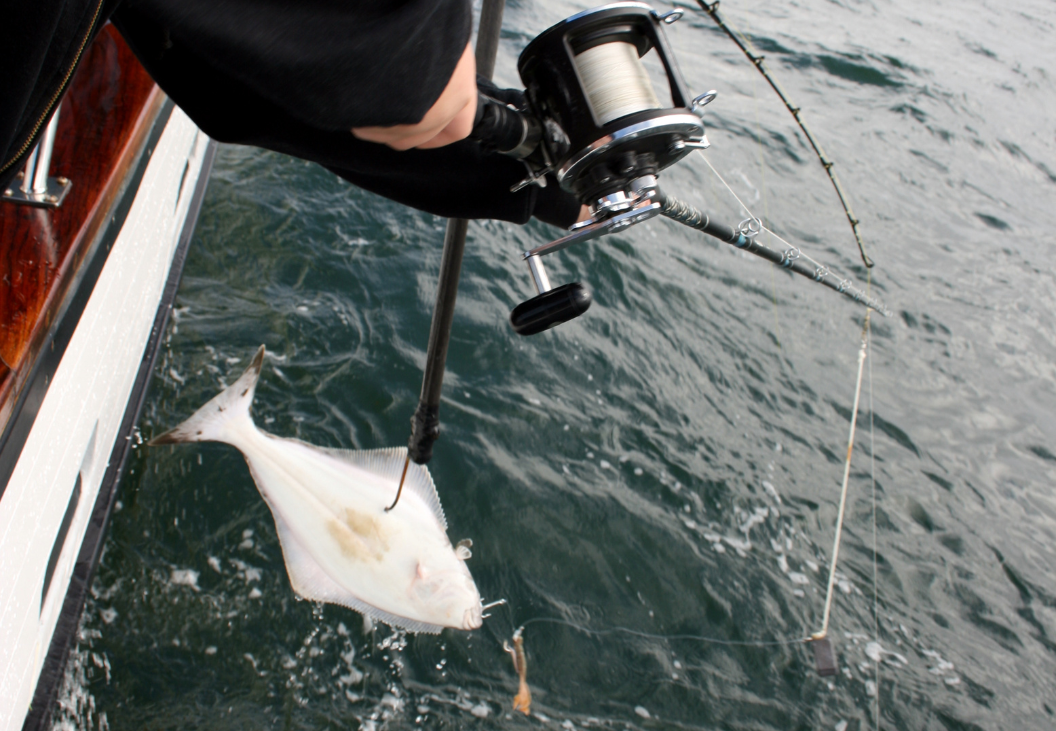Kodiak Island is widely regarded as one of the best places in Alaska to target Pacific halibut. The waters are nutrient rich, marine structure is excellent, and fishing pressure in many locations remains moderate, which helps support healthy halibut populations. Lodges, charters, and local guides all praise Kodiak for its diversity of halibut fishing grounds, offering both nearshore shallow water opportunities and deeper shelf waters where larger halibut frequent. According to several guides and fishing lodges, the prime halibut fishing season in Kodiak runs roughly May through September, with peak activity in July and August. For 2026 you can expect similar seasonal patterns. Early summer provides long daylight hours, milder weather, generally calmer seas, and increasingly active halibut nearshore. Later summer and early fall remain strong, though fish often begin moving deeper as waters cool and weather changes.
Helpful Tips On Planning Your 2026 Halibut Fishing Trip to Kodiak Alaska
When to Fish in 2026: Season Timing & What to Expect
To make the most of your 2026 halibut trip, timing matters. Here is a breakdown of what to expect by period:
- May to early June: The fish begin to move shallower as water temperatures warm. Anglers can get good early season bites. The weather is still somewhat variable, so plan for some rain, fog, and possibly cooler mornings.
- June through August: These are peak months for halibut. July and August often provide the best mix of calm seas, long daylight, and strong halibut action. Larger fish are more actively feeding. This is also when many charters and lodges are most in demand.
- September: The season remains productive especially early in the month. Water temperatures begin to change, fish may start moving into deeper water. The advantage is fewer crowds, often more tranquil fishing days, beautiful fall scenery, and excellent wildlife viewing. Late September, weather and sea conditions can begin to be less predictable.
If your goal in 2026 is to catch large halibut, target mid‑summer (July/August); if you prefer a slightly quieter trip with still good fishing, September is a strong choice.
Regulations, Limits & Legal Requirements
Understanding regulations ahead of your trip is essential. Kodiak halibut fishing is regulated by Alaska’s Department of Fish & Game and other agencies. Some key points to know:
- Daily limit per person is two halibut during the prime season (May‑September). If two are kept in one day one must be under a specified size (often 28 inches) and the other can be of any size.
- Some areas may have “closed days” or fishing restrictions (for example, certain days where halibut retention is not allowed) depending on the regulatory area. Be sure to check whether the charter area where you fish has rules for closed days.
- Licenses are required. Visitors must have a valid Alaska fishing license to fish for halibut. If fishing through a charter, part of the charter cost often includes handling licensing or guide‑assisted compliance.
- Size limits and conservation practices are enforced. Guides and lodges often encourage releasing very large halibut (female broodstock) to support future fisheries. Some lodges report average halibut kept are in the 30‑50 pound range though much larger fish can be hooked.
Staying informed about regulation changes (annual or emergency orders) as your trip approaches is a smart move.
Gear, Equipment & What to Pack
To optimize your chances of success, bring the right gear and packing essentials.
- Rods and reels designed for halibut: heavy to extra‑heavy action rods, large capacity reels with strong drag systems.
- Line and leaders: Use braid or braided main line for strength, paired with suitable monofilament or fluorocarbon leaders. Hooks should be the sturdy kind like circle hooks, dropper loops, and rigs weighted to hold near bottom.
- Bait and lures: Traditional baits like herring, squid, octopus, or cut‑bait work well. Jigging is a useful technique. Some locations also benefit from using lures or jigs that imitate injured baitfish.
- Clothing and safety gear: Weather on Kodiak can change rapidly. Layers, waterproof outerwear, gloves, sunglasses, hat, and non‑slip boots are essential. Also, bring personal items like sunscreen, rain gear, and gear for changing conditions on the water.
- Other tools: Measuring tape or board (to ensure the smaller halibut fits regulation‑size if required), filleting knife, cooler, fish bag, gear to package or freeze catch if needed.
Booking & Logistics for Your 2026 Trip
To ensure your 2026 halibut fishing trip to Kodiak is well organized here are tips on booking and travel.
- Book your charter and lodging early, especially if you want prime summer dates. Lodges and boats fill up fast for July and August.
- Consider if you want a remote experience or something more accessible. Remote lodges may require floatplanes or boat transfers, so factor in extra travel time and cost.
- Factor in weather contingency days. Seas, wind, or storms may cause delays or cancellations, so having a flexible schedule helps.
- Plan your transport into Kodiak and within the island. Flights to Kodiak (often via Anchorage) plus local travel to lodge or boat departure points need solid coordination.
- Confirm what is included: gear, meals, fish cleaning, packaging, transportation, licenses. Lodges that include fish processing or freezer‑box shipping help a lot if you plan to take home your catch.
Where to Fish Around Kodiak in 2026
Some of the most productive fishing grounds for halibut around Kodiak include:
- Larsen Bay and its nearby grounds: Lodges in Larsen Bay report close proximity to halibut fishing grounds, shorter boat rides, and productive waters.
- Sitkalidak area: Waters with shallower depths (for example 30‑140 feet) and manageable currents are good for halibut, especially in summer.
- Nearshore reefs and drop‑offs: Areas like Buoy 4, Cape Chiniak, Long and Spruce Islands are often cited by guide services as excellent halibut spots.
- Deeper shelf waters for BIG fish: For larger halibut many charters target deeper water later in the season where big fish tend to congregate. Lodges like Kodiak Legends report fishing in depths of 180‑240 feet and deeper when necessary.
What to Expect in Terms of Experience
Your halibut fishing trip will likely include early mornings, long hours on the water, wildlife sightings, unpredictable weather, and intense fishing excitement. You will be rewarded with fresh halibut, often cleaned, filleted, and packed for your journey home. Even days with less catch are full of beautiful ocean views, wildlife, and the satisfaction of being in a wild Alaskan setting. Because of longer days in summer, you’ll have more daylight to fish, explore, and absorb the wilderness.
Checklist for Your 2026 Halibut Fishing Trip
Here’s a quick checklist to help you prepare:
- Select your ideal dates between May and September, with July and August being priority months.
- Secure lodging and charter well in advance.
- Obtain your Alaska fishing license, verify halibut regulations for your charter area.
- Pack heavy‑duty fishing gear, bait, clothing layers, safety gear.
- Plan for fish processing and transport (freezer boxes, packaging etc.).
- Arrange travel into Kodiak and local transfers to lodging or boats.

